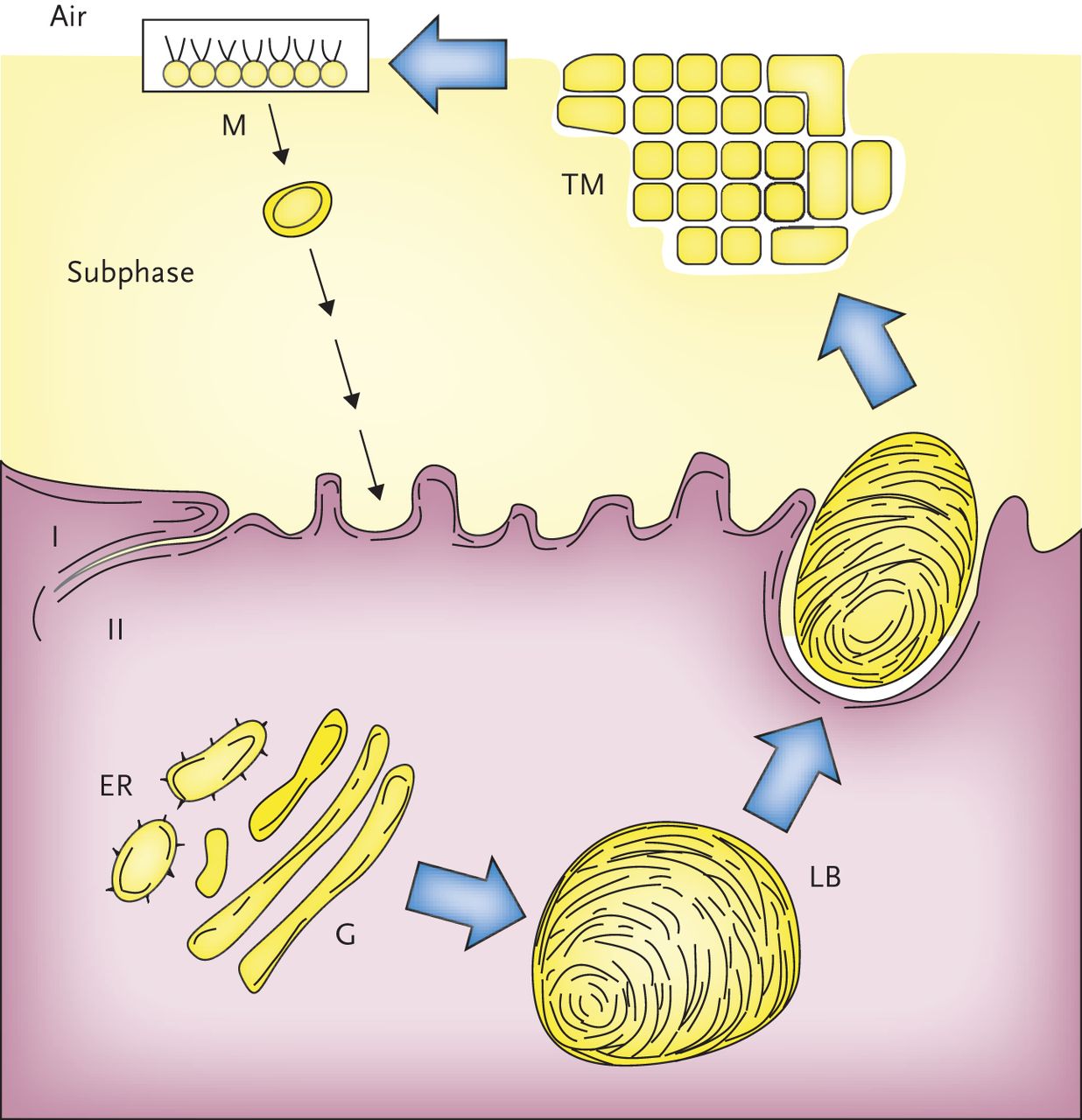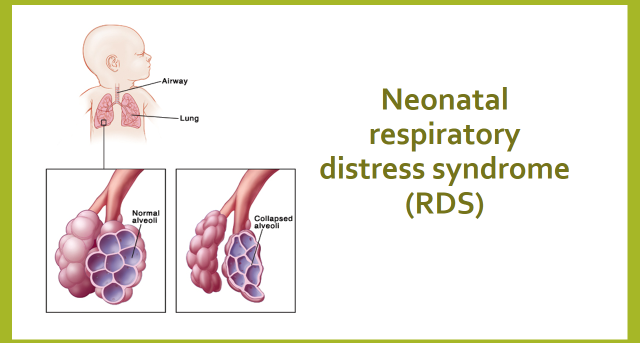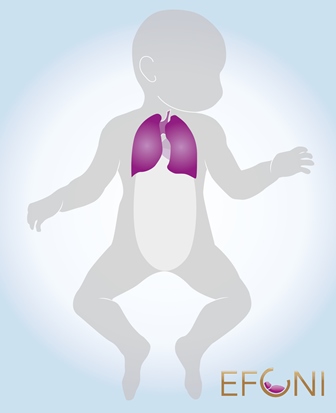pulmonary surfactant in premature babies
Minimal surface tensions are also higher for surfactant from preterm than term infants. Etiology of surfactant inactivation or dysfunction.

Postnatal Steroids In Premature Babies Where Are We Now Paediatricfoam
Clements to the field of pulmonary biology stand alone.
. Treatment for RDS may include. This is a breathing machine. Respiratory distress syndrome RDS of infants is due most often to a developmental deficiency of pulmonary surfactant combined with immature lung structure.
Synthetic surfactant is effective in reducing respiratory distress syndrome in preterm babies. The preterm infant who has RDS has low amounts of surfactant that contains a lower percent of disaturated phosphatidylcholine species less phosphatidylglycerol and less of all the surfactant proteins than surfactant from a mature lung. Pulmonary surfactant is a substance that prevents the air sacs of the lungs from collapsing by reducing surface tension.
Natural surfactant is produced by the fetus before they are born and their lungs are prepared to breathe properly by about 37 week gestation. Components of lung surfactant. Previous studies have used tracheal aspirate TA lavage fluid to examine components of surfactant and other constituents from airways of premature infants 8 12.
Pulmonary surfactant is a vital substance that coats the tiny air sacs of the lungs and is required for normal breathing. Its called pulmonary surfactant and without it their air sacs could collapse. Click to see full answer.
This is a substance that keeps the tiny air sacs in the lung open. Replacement of natural surfactant therapy with purified surfactant from lungs of nonhuman species is one of the most significant advances in neonatology and has resulted in improved limits of viability of preterm infants. Synthetic surfactants have been developed and can be used for babies born prematurely before 34.
Preterm infants with respiratory distress syndrome RDS requiring surfactant therapy have been traditionally receiving surfactant by intubation surfactant and extubation technique InSurE which comprises of tracheal intubation surfactant administration and extubation. Surfactant replacement was established as an effective and safe therapy for immaturity-related surfactant deficiency by the early 1990s. Surfactant in Preterm Infants Introduction Pulmonary surfactant is a complex mixture of phospholipids and proteins that serves to reduce alveolar surface tension.
It is formed by type II pneumocytes from about 20 weeks of gestation. The prevention and treatment principle of NRDS in preterm infants is to maintain normal pulmonary ventilation. Using surfactant has been shown to reduce pneumothorax collapsed lung and increase survival rates significantly.
Previous studies have found that the reason for the high incidence of NRDS in preterm infants is alveolar atrophy and collapse caused by the loss of pulmonary surfactant PS in preterm infants which leads to the decline of lung compliance 45. The contributions of John A. In unexpected circumstances where labor starts early or a pre-term emergency caesarean is performed lung surfactant is given intratracheally to the premature infant to prevent respiratory distress syndrome.
First dose needs to be given as soon as diagnosis of RDS is made. However more recently noninvasive methods like least invasive surfactant therapy. It is given to replace what your babys lungs did not make before birth.
Surfactant in preterm infants introduction pulmonary surfactant is a complex mixture of phospholipids and proteins that serves to reduce alveolar surface tension. I recently saw your article from last year about the collection. Although preterm infants are the primary population exogenous surfactant treatment may also have a role to play in other respiratory.
55 376 Views. 1 Systematic reviews of randomized controlled trials confirmed that surfactant administration in preterm infants with established respiratory distress syndrome RDS reduces mortality decreases the incidence of pulmonary. Placing a breathing tube into your babys windpipe trachea Having a ventilator breathe for the baby Extra oxygen supplemental oxygen Continuous positive airway pressure CPAP.
Infants of pulmonary disability or death in severe cases. This bolus then spreads to the distal airways as the lungs move. His discovery of lung surfactant and subsequent work that created an artificial version of this vital substance have saved literally thousands of lives of.
Surfactant replacement therapy for RDS - Early rescue therapy should be practiced. 23 Votes A baby develops RDS when the lungs do not produce sufficient amounts of surfactant. Treatments that specifically target reducing surfactant inactivation would be more effective in adults than replacement lung surfactant therapies that were developed to provide premature babies with lung surfactant.
Infants born prematurely at less than 32 weeks of gestation are deficient in pulmonary surfactant and often develop respiratory distress syndrome. Low phosphatidylglycerol content has been previously observed in surfactant from premature infants and may reflect delayed development of biosynthetic capacity andor effects of lung injury 30. Pulmonary hemorrhage sepsis pneumonia meconium aspiration and post surfactant slump.
Why do premature babies have surfactant deficient lung disease. Sometimes it is absent in immature lungs and respiratory distress syndrome RDS can develop. Premature infants have decreased lung content of all surfactant components including surfactant-specific proteins SP A SP-B and SP-C as well as the surface-active phospholipid.
It Is Formed By Type Ii Pneumocytes From About 20 Weeks Of Gestation. For defining the role of pulmonary surfactant and developing a life-saving artificial surfactant used in premature infants around the world. To examine the status of surfactant in infants at high risk for BPD this prospective study analyzed 247 tracheal aspirate samples from 68 infants of 23-30.
Surfactant for pulmonary haemorrhage in neonates Bleeding into the lungs pulmonary haemorrhage occurs mainly in infants born before term 37 weeks gestation because of severe lung disease particularly respiratory distress syndrome a disease caused by the lack of the normal lining chemicals of the lung surfactant and the need for a breathing. The diagnosis can be confirmed by biochemical. This coating is often missing or deficient in the lungs of preemies resulting in a condition known as Respiratory Distress Syndrome RDS that was a leading cause of infant mortality prior to the invention of surfactant therapy.
Several brands are available. As a result a premature baby often has difficulty expanding her lungs taking in oxygen and getting rid of carbon dioxide. RDS in a premature infant is defined as respiratory distress requiring more than 30.
Clements to the field of pulmonary biology stand alone. Exogenous surfactant replacement therapy for the treatment of rds in premature infants decreases severe rds pulmonary air leak syndromes and death. Proper lung surfactant is a complex mixture of roughly 90 lipids and 10 proteins in an aqueous solution.
Why it happens NRDS usually occurs when the babys lungs have not produced enough surfactant.

Treatment Of Breathing Problems In Premature Babies

Breathing Problems And Premature Babies
Biophysical Study Of Lung Surfactant Laboratory Of Biocolloids And Biointerfaces

Surfactant Replacement In Neonates By Brian Walsh For Openpediatrics Youtube
Biophysical Study Of Lung Surfactant Laboratory Of Biocolloids And Biointerfaces

Pulmonary Surfactant In Newborn Infants And Children European Respiratory Society

Pulmonary Surfactant In Newborn Infants And Children European Respiratory Society

Respiratory Distress In Infants And Adults Brave Beginnings

Surfactant Replacement Therapy A Milestone In Neonatology Efcni